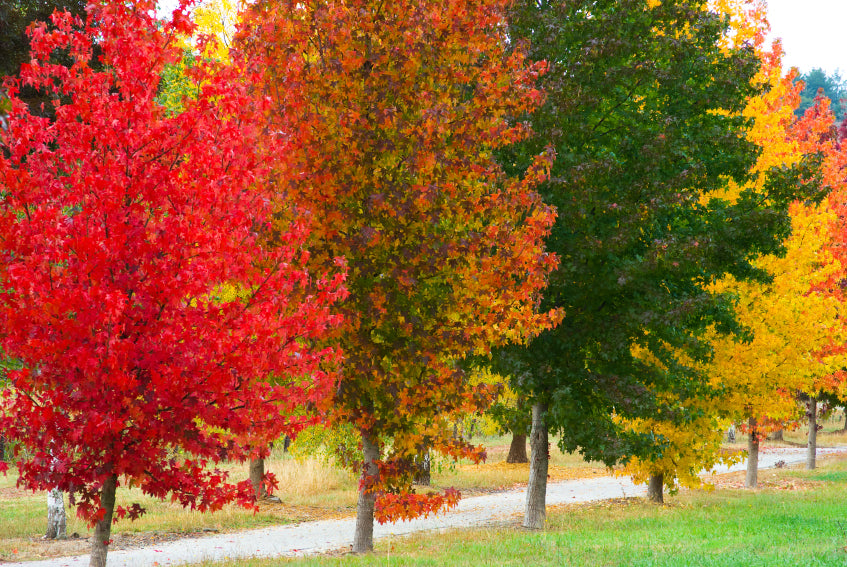Sweetgum (Liquidambar)
The sweetgum is the perfect place for an autumnal firework! Native to North America, this tree has an aromatic sap that was once used to make chewing gum, which is why it is also known as 'American Sweetgum' or 'Redgum'. It has plenty of space in medium-sized gardens and is an excellent specimen plant.

Growth form:
The straight-trunked tree can grow up to 30 meters tall. In Central Europe, however, it typically reaches a medium height of 10 to 20 meters. When young, it is slow-growing (approximately 35 centimeters) and rather conical in shape, later developing a more rounded crown.
Leaf and flower:
The maple-like, deciduous leaves have five to seven lobes, with a slightly glossy upper surface and a duller underside. In autumn, the sweetgum displays an intense array of colors, ranging from deep purple to violet-brown to yellow-orange and scarlet. Crushing the leaves releases a pleasant fragrance. After flowering in May, when green blossoms appear, spherical fruits develop, hanging from the stem and often remaining until winter.
Site requirements/care measures:
To ensure the characteristic autumn coloration, a fully sunny location with fresh to moist, nutrient-rich, permeable, and lime-avoiding soil is recommended. The deeper the soil, the stronger the annual growth often is. In extreme winters, it is possible for buds to freeze. This is not too worrying, however, as later budding around June allows the sweetgum to regenerate well. When young, however, you should keep an eye on your protégé now and then, as it is considered sensitive to frost and late frosts during this period. However, if you give this warmth-loving, light-hungry plant enough space for its roots to develop freely, it will not cause any problems and will thank you as a free-growing, easily satisfied woody plant.
Varieties:
- 'Worplesdon': staying slimmer
- 'Gumball': spherical
- 'Lane Roberts': scarlet
TEXT: Nora Kriegs












